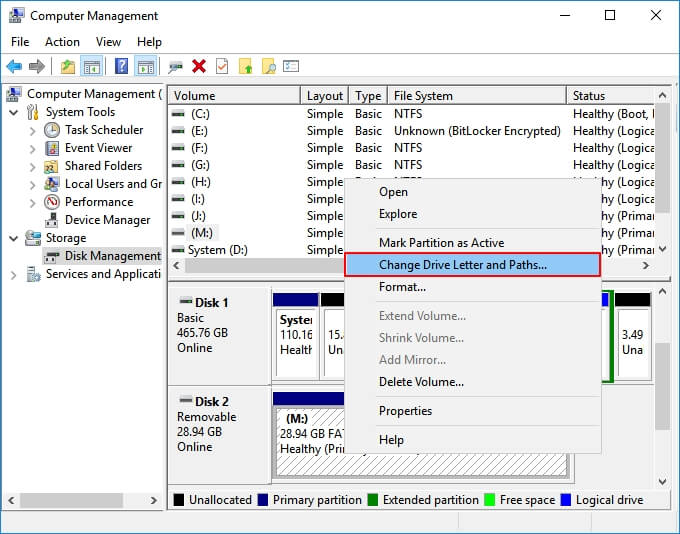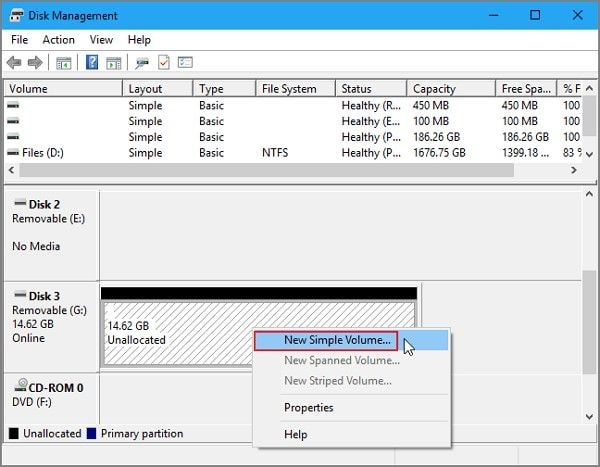
I think there's an issue with my storage device, but I'm not sure Start a free evaluation →
I need help getting my data back right now Call now (800) 972-3282
Also known as memory cards, SD cards are more resistant to physical damage than other external data storage devices. A memory card has a better chance of surviving extreme conditions like dust, water, shocks, and even drops from great heights than, for example, an HDD. Yet, you can face a corrupted SD card at any time.
Severe physical damage can extend beyond the visible connectors. So, even if the SD card seems to run smoothly after an accident, however, it still looks normal, there is a chance that you have damaged the card causing partial or complete data loss. Make sure to back up the data on it immediately after the incident to minimize potential losses.
One more reason to prevent data loss immediately is that memory cards won’t alert you about malfunctions with a distinctive sound like beeping or rattling. But it’ll give you other signs.
You get a corrupted SD card when:
- You can’t find it in File Explorer
- Doesn’t show media in Disk Management
- Shows up empty, or if the files are missing
- Displays as RAW
- Became locked, write-protected, or read-only
- Is undetectable or unrecognizable
- Error messages pop up when you try to use it
How can SD cards get damaged?
Your SD card can get physical damage when:
- It is bent, damaged, or partially broken
- It is burnt or drowned
- Has scratches or abrasions on its chip
Slow performance can both be a sign of physical damage to the card as well as corruption. If you notice your memory card gets stuck or freezes during operation, or if the data transfer takes an unusually long time.
Once the problem is determined, you can proceed with suitable solutions to repair your memory card.
Important: Repairing the SD card on your own is risky since it can lead to irreversible memory loss. In case your memory card contains a large amount of important data, it is better to ask for a data recovery specialist to help with it.
10 top ways to fix SD cards on Windows
#1. Reconnect your SD card
Sometimes, a memory card may become unreadable as a result of power supply issues or connection problems. Take a few steps so you can exclude external factors.
- Unplug your SD card, then reconnect it to the PC.
- Switch the SD card lock key. It might be locked and therefore you can’t access it.
- Try connecting your SD card to another computer.
#2. Assign a new drive letter
Your SD card may not show up in Disk Management due to a conflict with drive letters. As a result, your microSD may become unreadable, or act as corrupted.
To solve it, follow these steps:
Step 1. Press the combination of Windows + X keys, then click on Disk Management.
Step 2. Find your SD card, right-click on it and choose “Change Drive Letter and Paths”.
Step 3. Choose Add/Change and select a new drive letter for your memory card. Hit OK to confirm.
#3. Run CHKDSK to repair corrupted SD card
Like any other removable storage device, memory cards can develop bad sectors over time. The CHKDSK command will check your SD card’s file system for corruption or errors, and then repair it by removing the bad sectors.
Step 1. Insert your memory card into the card reader and plug it into the PC.
Step 2. Type cmd in the search box.
Step 3. Right-click Command Prompt and choose “Run as administrator”.
Step 4. Type chkdsk F: /f /r /x, where F: is the letter of the corrupted SD card you’d like to repair and press Enter. The other letters in the command line stand for the actions that will be performed to repair your memory card’s file system: /f is to fix any found errors, /r is to detect bad sectors and restore any readable data, and /x is to forcibly dismount the volume you are going to check before the utility starts scanning.
Wait for the message “Windows has made corrections to the file system” in the command window. The errors on your SD card should be successfully fixed.
#4. Fix corrupted SD card with Windows repair tool
Running Windows Error Checking is another helpful feature to fix the corrupted SD card.
Step 1. Connect your SD card to the computer.
Step 2. Open Windows Explorer and find the memory card in This PC folder.
Step 3. Right-click the SD card. Open its Properties.
Step 4. Navigate to the Tools tab, then click the Check button.
Once the scan process is finished, you should be able to access the data on your SD card.
#5. Run Windows troubleshooter tool
Windows Troubleshooter is designed to help you troubleshoot hardware and driver problems. If your memory card has a similar problem, this one must work.
Step 1. Connect your SD card to the computer.
Step 2. Head to Windows Settings > Update & Security > Troubleshoot.
Step 3. Click “Run the troubleshooter” under the Hardware and Devices block.
Wait until the troubleshooting is complete, then restart the computer.
#6. Run Diskpart to unlock the SD card
In case your SD card became locked, write-protected, read-only, or was encrypted with third-party software, running DiskPart to clear the read-only command is a fast way to deal with this kind of issue.
Step 1. Connect your SD card to the computer.
Step 2. Press Windows + X, and click “Command Prompt (Admin)”.
Step 3. Type diskpart in the command prompt window, then press Enter.
Step 4. Type the command lines listed below, pressing Enter after each one:
- list disk
- select disk 1 (where 1 is the disk number of your memory card)
- attributes disk clear read only
Step 5. Wait until the process is complete, then type exit.
#7. Format SD card to FAT32 or exFAT
If your memory card is showing as RAW in Windows Disk Management, as well as if its file system is not supported by your camera or computer, formatting the SD card to NTFS, FAT32 or exFAT is the best way to solve the issue.
Step 1. Connect your SD card to the computer, then go to File Explorer.
Step 2. Right-click on the SD card you need to repair, and select Format.
Step 3. Choose a proper file system: NTFS, FAT32, or exFAT.
Step 4. Tick “Quick Format” and press Start.
Important: While formatting itself may fix a dozen of logical issues to the failing memory card, it will result in complete data loss. If you can’t afford to lose the data your memory card stores, we recommend that you seek help from the SD card recovery service.
#8. Creating a New SD Card Partition
When the memory card becomes empty and appears as unallocated space, it won’t show up in Windows File Explorer. To fix it, you’ll need to manually create a partition for Windows to recognize it.
Step 1. Connect your SD card to the computer, then open Disk Management.
Step 2. Right-click the unallocated space on the microSD and choose “New Simple Volume”.
Step 3. Follow the steps to assign a new drive letter, and set the volume size, FAT32 or exFAT to the SD card.
Step 4. Hit OK to confirm and Finish to complete the process.
#9. Use a data recovery software
You may find several recovery software online. SalvageData recovery software is available for all operating systems and is free.
Download and install the software to start scanning your SD card to find and restore any kind of data on it.
#10. Contact data recovery service
Unfortunately, if your SD card is bent, burnt, partially broken, or physically damaged in any other way, there’s nothing you can do to bring your storage back to life. You may contact the manufacturer if the device is still under warranty.
However, if the data on the memory card is important, and it has physical damage, your best chance to restore your data is through a recovery service.
SalvageData experts are ready to help you in any circumstance. Ask for a free in-lab evaluation and make sure your files get back to you.
Summary: You can recover the data from a corrupted SD card on your own, using recovery software, or by contacting a data recovery service. The first step is learning how your memory card got damaged, so you can take the precise solution to restore the data on it.
How to prevent data loss on a memory card
Protecting your memory card helps you to prevent data loss. These best practices are easy to follow and will guarantee you prolong your SD card usability.
- Always safely eject the SD card from your computer before removing it.
- Be careful with water, fire, and high temperature.
- Make sure you’ve enough battery on your device when writing data to your card.
- Make a backup of your memory card data.
- Avoid using your SD card’s maximum memory capacity.
There are many reasons for SD cards to fail. While you can fix some of them yourself, like minor logical errors or bad sectors, others require in-depth knowledge and, in some cases, specialized equipment.
Don’t hesitate to contact SalvageData experts for an in-lab evaluation of your SD card.

